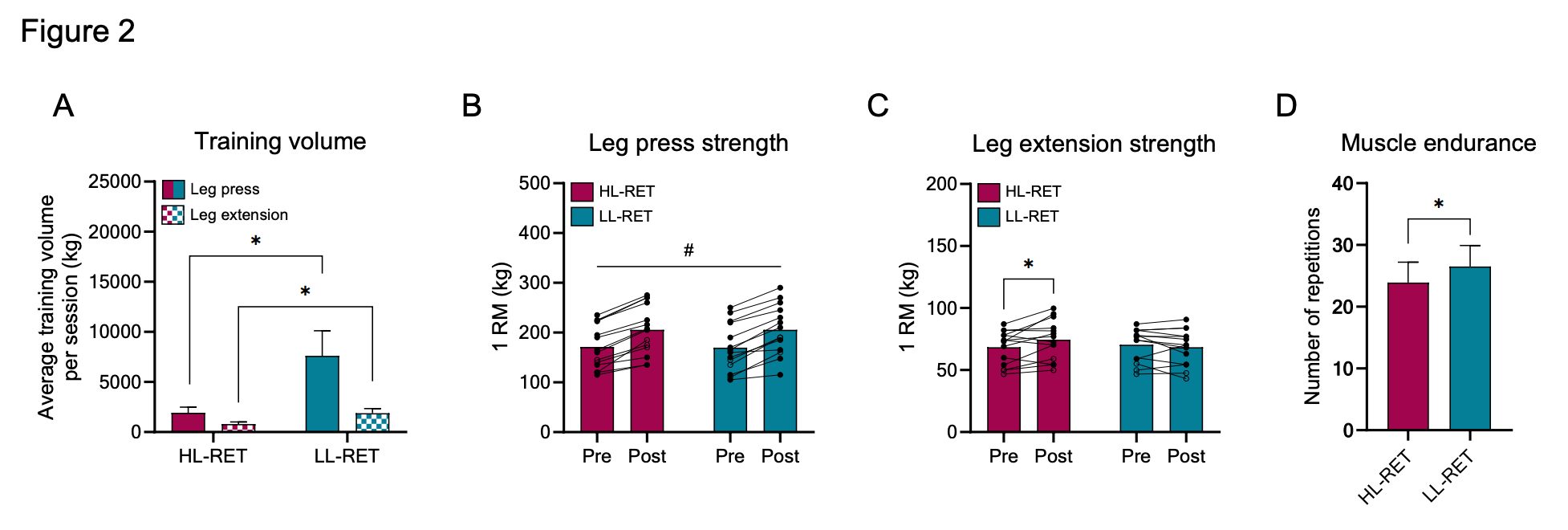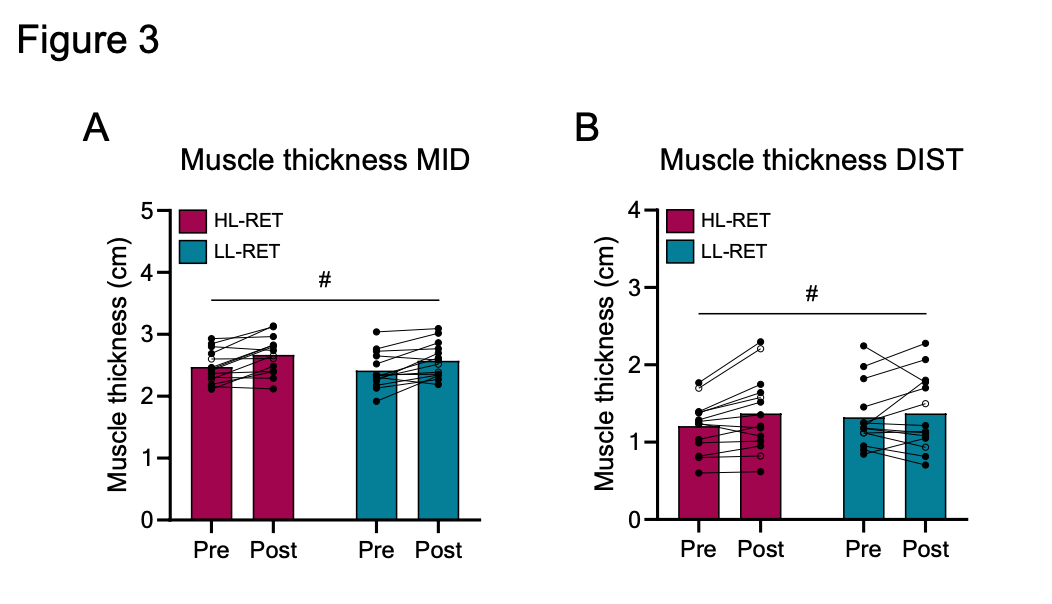Building strength and muscle has traditionally focused on lifting heavy loads (≥70% 1RM).
But not everyone can tolerate heavy loads — think older adults, rehab patients, or athletes managing injuries.
This study tested if low-load resistance training (20–25 reps to failure) could provide the same benefits as traditional high-load training (3–5 reps to failure) in already trained individuals.
Can low-load resistance training deliver similar strength and hypertrophy adaptations as high-load training?

What Did the Researchers Do?
Study Design
14 trained men and women (average age 26) trained one leg with:
- High-load (HL-RET): 3–5 reps @ ~90–95% 1RM.
- Low-load (LL-RET): 20–25 reps @ ~40–60% 1RM.
Training Plan
- Frequency: 2x per week for 9 weeks (17 sessions total).
- Exercises: Leg press and leg extension.
Testing
- 1RM (strength)
- Local muscle endurance
- Ultrasound muscle thickness
- Muscle biopsies for fiber type, cross-sectional area (fCSA), satellite cells, and myonuclei.
Controls: Same diet maintained, post-session whey protein given, both legs trained alternately in sessions.
What Were the Results?
Volume, Strength, and Endurance
- Training Volume: LL-RET legs lifted more total weight per session (2.9× higher in leg press).
- Leg Press (multi-joint): +21% strength in both HL and LL.
- Leg Extension (single-joint): HL outperformed LL (+9% vs no change).
- Muscle Endurance: LL improved endurance significantly (+9% vs -2.7% for HL).

Muscle Size and Cells
- Muscle Thickness: Increased ~7.4% (mid-thigh) and ~8.5% (distal) across both conditions.
- Fiber Size (fCSA): No measurable change in Type I or II fibers.
- Satellite Cells: Increased ~25% in Type I fibers, regardless of load.
- Myonuclei: No change, slight decrease in Type II fibers.

What Does This Mean?
- Low-load training is effective: Despite lighter weights, LL produced similar hypertrophy and multi-joint strength gains as HL when pushed to failure.
- Task-specific benefits: HL still had an edge in single-joint maximal strength.
- Endurance advantage: LL better improved muscular endurance, which may matter for athletes in sports requiring repeated efforts.
- Cellular adaptations: Type I fibers expanded satellite cell pools, hinting at long-term adaptive potential.
Limitations
- Short duration (9 weeks) ⮕ longer training may show clearer fiber growth.
- Small sample (n=14) ⮕ limited ability to detect sex differences.
- Unilateral design ⮕ while strong for control, it’s not the same as a full-body split.
Coach’s Takeaway
- There are many roads to muscle growth ⮕ intensity of effort matters most for growth.
- Use low-load strategies ⮕ during rehab, or with those who can’t tolerate heavy loading.
- Mix both HL and LL training ⮕ heavy lifts for maximal strength, light high-rep sets for endurance and hypertrophy.
I hope this helps,
Ramsey
Reference
Cumming KT, Elvatun IC, Kalenius R, Divljak G, Raastad T, Psilander N, Horwath O. (2025). Comparable Strength and Hypertrophic Adaptations to Low-Load and High-Load Resistance Exercise Training in Trained Individuals: Many Roads Lead to Rome. bioRxiv.




